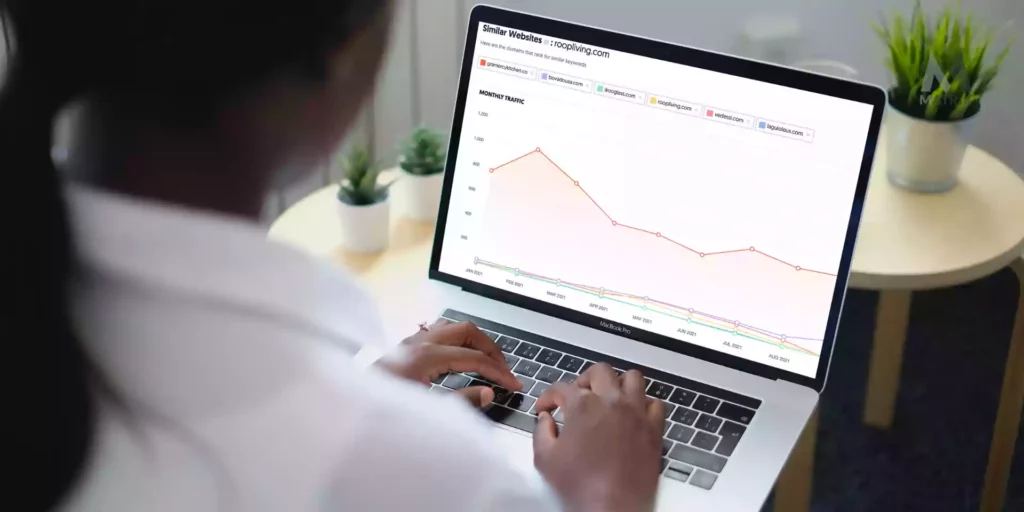How to Perform Competitive Analysis
This is an article about competitor analysis. In marketing, competitor analysis is a set of techniques managers use to obtain information about their competitors’ products and services.
It allows businesses to understand the marketplace dynamics, monitor competitor activity, and identify opportunities for themselves.
You must know your competitor to stay on top of their game.
Competitor analysis is a set of techniques managers use to get information about competitors’ products and services. This article also includes how to perform competitive analysis to keep up with competitors in an ever-changing market.
Who Needs A Competitor Analysis Framework?

It’s important to know your competitor in order to stay on top of their game. Analyzing your competitors can tell you a lot about what is going on in the marketplace and give you the data that will help you make sound decisions.
Competitor analysis is a set of techniques managers use to get information about their competitors’ products and services. It allows businesses to understand the marketplace dynamics, monitor competitor activity, and identify opportunities for themselves.
We can easily observe competitor behavior using reference sites like SimilarWeb or Alexa. Although these tools are not perfect (and each has its specificities), they provide interesting data about competitor strategy.
For example, we can ask questions like:
- How often do they publish posts?
- How much traffic comes from search engines vs social media?
- What are their top contents in terms of views?
The competitor analysis process can be improved by adding data visualization in Excel spreadsheets and good narrative content.
This way, you can tell a story about competitor activity for different audiences.
The competitor’s strengths
The competitors’ strengths are an important part of competitor analysis so that you can keep up with them in an ever-changing market.
Here are some competitor strengths to examine in your competitor analysis:
- The competitor advertises with digital channels
- The competitor has a website
- The competitor uses coupons and deals to attract customers
- The competitor has certain brands that they specialize in
- They have a specialization in certain brands
How do your competitors advertise?
There are many ways competitors advertise. Some competitors advertise with television commercials.
If competitors have a website, competitors will often advertise there as well In Google ads, Bing ads, and other social media channels.
Competitors may also advertise using coupons and deals to attract customers.
The competitor may specialize in certain brands and market these products and services through their website and TV commercials.
Why competitive analysis matters for ecommerce

Competitive Analysis is an important part of any online business. It helps us understand what other people are doing so we can gain better insights into how to change our own strategy or take advantage of competitors’ weaknesses.
For example, let’s say that competitor X has started offering free shipping in order to increase sales. If competitor Y still offers the standard $5 fee, competitor Y may then rank higher because customers see their service as superior in comparison.
One could optimistically interpret this situation to be an opportunity for competitor Y by highlighting the fact that they offer services with no additional cost (or even make it seem like competitor X is dumb for giving away something when money should always come first).
Alternatively, you would preserve your original approach and hope that few people take competitor X up on their offer.
The key is to know your competitors so you can always stay one step ahead of them. Or at least keep an eye on what they’re doing so you can prepare for any sudden changes. With that in mind, here are 10 competitor analysis templates to help you get started.
You can also use competitor analysis as a part of your internal training program to explain the importance and practice of competitor monitoring. Some competitor analysis templates you can use:
- competitor analysis
- competitor behavior
- competitor strategy
- competitor content strategy
- competitor product strategy
- competitor industry dynamics
- competitor product information and prices
- competitor company profile and history
- competitor distribution channel and channel profitability
- competitor pricing strategy and success factors of competitor pricing strategy
- the cost structure of competitor products, services, or solutions (cost drivers, cost comparison)
- market trends: competitor information, competitive intelligence, and market dynamics
How to Conduct a Competitive Analysis for Your Business

There are many ways to conduct a competitor analysis for your business, but we’ll discuss the two primary ways: competitor interviews and research.
Competitor interviews involve meeting with employees of competitor companies and asking them questions about their company and its operations.
Competitor research involves searching websites, reading articles, and watching videos for information on competitor companies.
What’s the Difference Between a Competitive Analysis and a SWOT Analysis?
A competitor analysis informs you about your competitor’s strengths, weaknesses, opportunities, and threats (SWOT). It provides only basic information, such as market share.
A SWOT analysis helps you determine what your company should do next, whereas a competitor analysis gives you a better idea of competitor behavior.
What’s the Difference Between a Competitor Analysis and a Benchmarking Analysis?
A competitor analysis shows how competitor companies perform relative to your business, while a benchmarking analysis shows how competitor companies’ performance compares with industry averages.
In other words, competitor analysis measures competitor company activities, whereas benchmarking measures industry activities.
Benchmarking usually requires extensive primary research. To make meaningful comparisons between organizations and/or your organization, you must perform detailed statistical analyses of data from different organizations.
Competitor analysis would involve looking at website analytics, sales figures, market share, etc., which is second-hand data that doesn’t require statistical analysis or primary research.
How to Do a Competitive Analysis for Your Business: The Competitor Interview
Before you can begin competitor research, you need to meet with people who work at competitor companies and ask them questions about their company and how it works.
You should choose competitor companies similar to your own business in size, location, industry, etc.
Make a list of potential competitor companies and contact them by telephone or email, asking if they’d be willing to meet with you for an interview.
If an employee says yes, then keep the following five steps in mind when doing competitor analysis:
- Prepare a list of competitor research questions beforehand so you don’t forget anything during the interview. Asking open-ended questions will allow respondents to answer in their own words and provide you with more detailed competitor research.
- Prepare a competitor analysis form with the competitor company name, contact details, job title, business category, industry type, and question number as headers so respondents can easily fill out the questionnaire manually. You don’t want to spend too much time looking for information on your competitor’s website during the interview because it’ll take up valuable time that you could otherwise use to ask questions about your competitor’s business.
- Keep the interviewer objective by asking competitors only questions appropriate for each respondent’s knowledge base and position at their respective companies. If possible, try to get interviews with several people working at competing companies because they’ll all provide different competitor information.
- If an employee refuses to answer your competitor’s research questions, don’t be rude and persistent by asking the same question repeatedly. Even if you do get an answer, it’ll be second-hand competitor analysis data, which isn’t as reliable as primary competitor research. Instead, thank them for their time and end the interview politely. You can always contact another competitor company for competitor analysis information.
- Take notes throughout the competitor interview so you don’t forget anything important about competitor companies. Don’t rely on memory during the competitor analysis process because it’s easy to forget what respondents said about competitor statistics and information when there’s a lot of it involved, especially if done in several separate interviews with people who work at competitor companies.
12 Competitive Analysis Templates
- Determine who your competitors are.
- Determine what products your competitors offer.
- Research your competitor’s sales tactics and results.
- Take a look at your competitors’ pricing, as well as any perks they offer.
- Ensure you’re meeting competitive shipping costs.
- Analyze how your competitors market their products.
- Take note of your competition’s content strategy.
- Learn what technology stack your competitors use.
- Analyze the level of engagement on your competitor’s content.
- Observe how they promote their marketing content.
- Look at their social media presence, strategies, and go-to platforms
- Perform a SWOT Analysis to learn their strengths, weaknesses, opportunities, and threats
Unlock Rapid Growth with Our Facebook Ads Starter Kit
Transform your Facebook advertising strategy in just one month.
Get expert strategy, seamless ad setup, and your first month of optimized ads — all designed to put your business on the fast track to success.
Collect data with these competitive analysis tools
Once you know which competitors you’ll study, it’s time to start researching and collecting data for your competitive analysis.
The good news is that today, many different tools and software are available that can make data collection for your competitive analysis simpler, more efficient, and more accurate.
Have you ever used Google Alerts? Try it.
SpyFu is a great online advertising research tool.
SpyFu is a competitive intelligence consulting company that includes competitor SEO audits, competitor link analyses, competitor traffic sources, and competitor conversion rates.
SpyFu has been providing SEO services for those interested in understanding their competition since 2001. SpyFu aims to evaluate your business’s and competitors’ online performance so the client can make more informed decisions about what they should be doing online.
SpyFu’s competitor SEO audit examines competitors’ organic and paid keywords and analyzes how these search engine terms affect position and click-through rate (CTR). Based on accurate data from competitor reports, the customer will know how to customize their own campaign strategy by determining where to allocate budgeting.
Other resources that can help you gather key insights into different aspects of your competition’s marketing approach.
SEO Analysis tools
- Ahrefs: checks any URL’s top-performing organic keywords and gets estimated traffic reports around those keywords.
- Alexa: helps define audience demographics and search rankings.
- SE Ranking: shows competitors’ paid and organic search performance, strategy, and keywords.
PPC/keyword performance
- SimilarWeb: gives insights into estimated monthly visits and key traffic sources for a website.
- SpyFu: helps you research and download the most profitable keywords your competition is using in their PPC campaigns.
- iSpionage: shows how many keywords competitors use on Google Ads, which ones they’re targeting, and their projected monthly budget.
- SEMrush: helps identify your competition’s keywords, does a site audit, and analyzes backlinks.
- WhatRunsWhere: provides data around competitors’ advertising approaches across the internet.
Social media performance
- RivalIQ: shows how often competitors post across social channels, their average engagement rates, and their most successful content.
- Followerwonk: provides Twitter insights around follower demographics, key influencers, and performance metrics.
- Sprout Social: benchmarks around competitors’ social performance across social channels, influencer identification, and reporting.
Email marketing
- Owletter: analyses changes in sending frequency and spots trends in competitors’ emails.
- MailCharts: aggregates emails and provides insight into the frequency of email sends subject line tactics, and more.
Content marketing performance
- BuzzSumo: helps you see the top-performing content for topics, specific competitors, and total social shares.
- Monitor Backlinks: helps monitor backlinks each time someone references your content, plus that of your competitors.
- Feedly: aggregates content as it’s published so you can study topics covered by competitors in one place.
Using these resources, start gathering data and dropping it into your competitive analysis spreadsheet so your findings are all stored in a single, organized space.
Wrap-Up on Competitor Analysis

Competitor analysis is helpful for your business because competitor companies are trying to do the same things you are, so they’ll probably use marketing techniques and strategies similar to yours.
It’s important to know what competitor companies are doing so you can stay ahead of your game.
You should always monitor competitor activity to assess performance against industry averages. This will allow you to compare how your business stacks up against competitor businesses, identify new opportunities for your business and gain insight into competitor company intentions.
Now that you know competitor analysis, why not try online competitor analysis tools?
They’re free, and they make competitor research easy by providing various types of reports based on the data you input.
Competitor analysis is a good way to see how your competitors’ companies are doing in comparison to your own business, and competitor analysis templates make competitor research easier.

